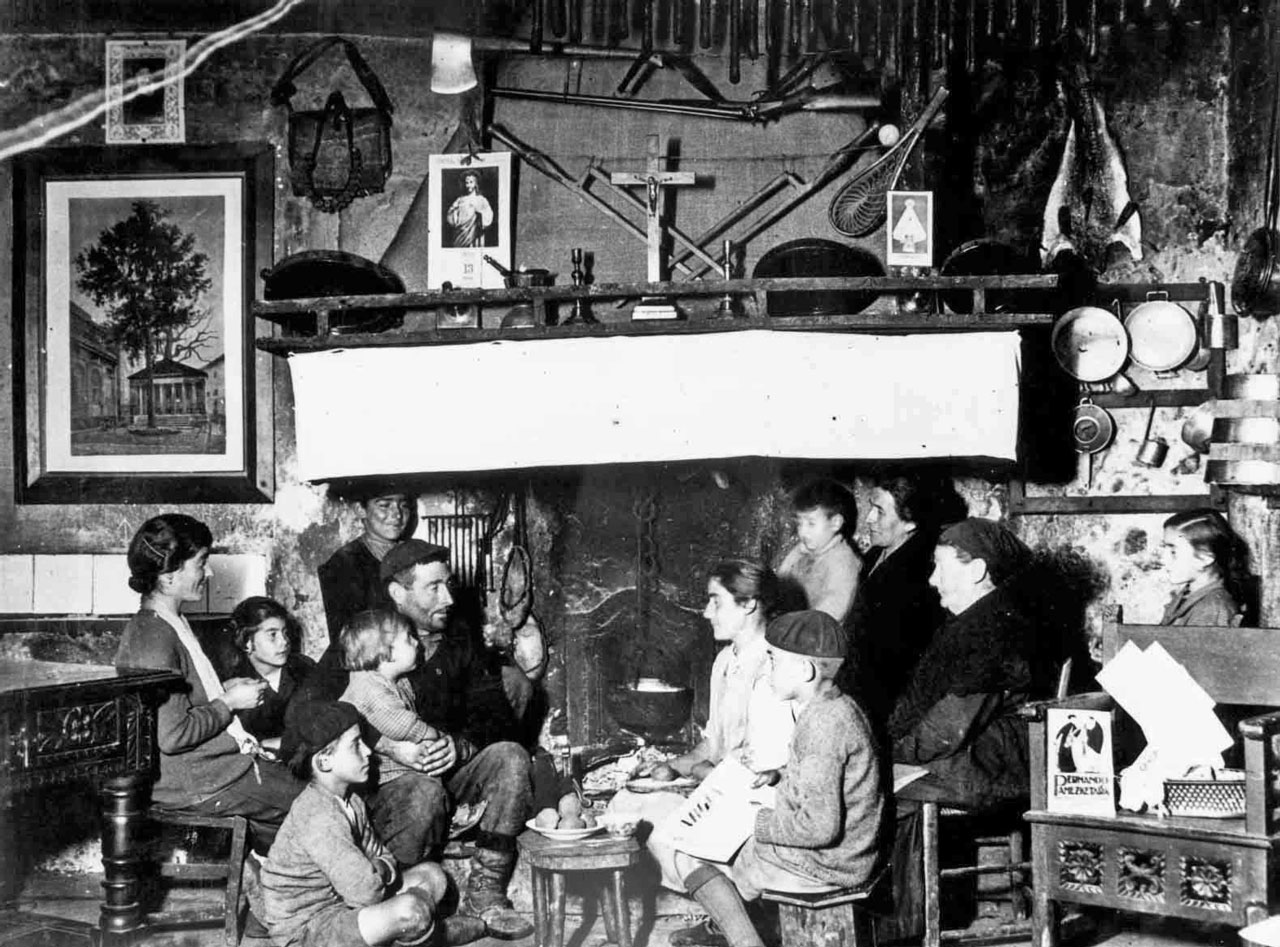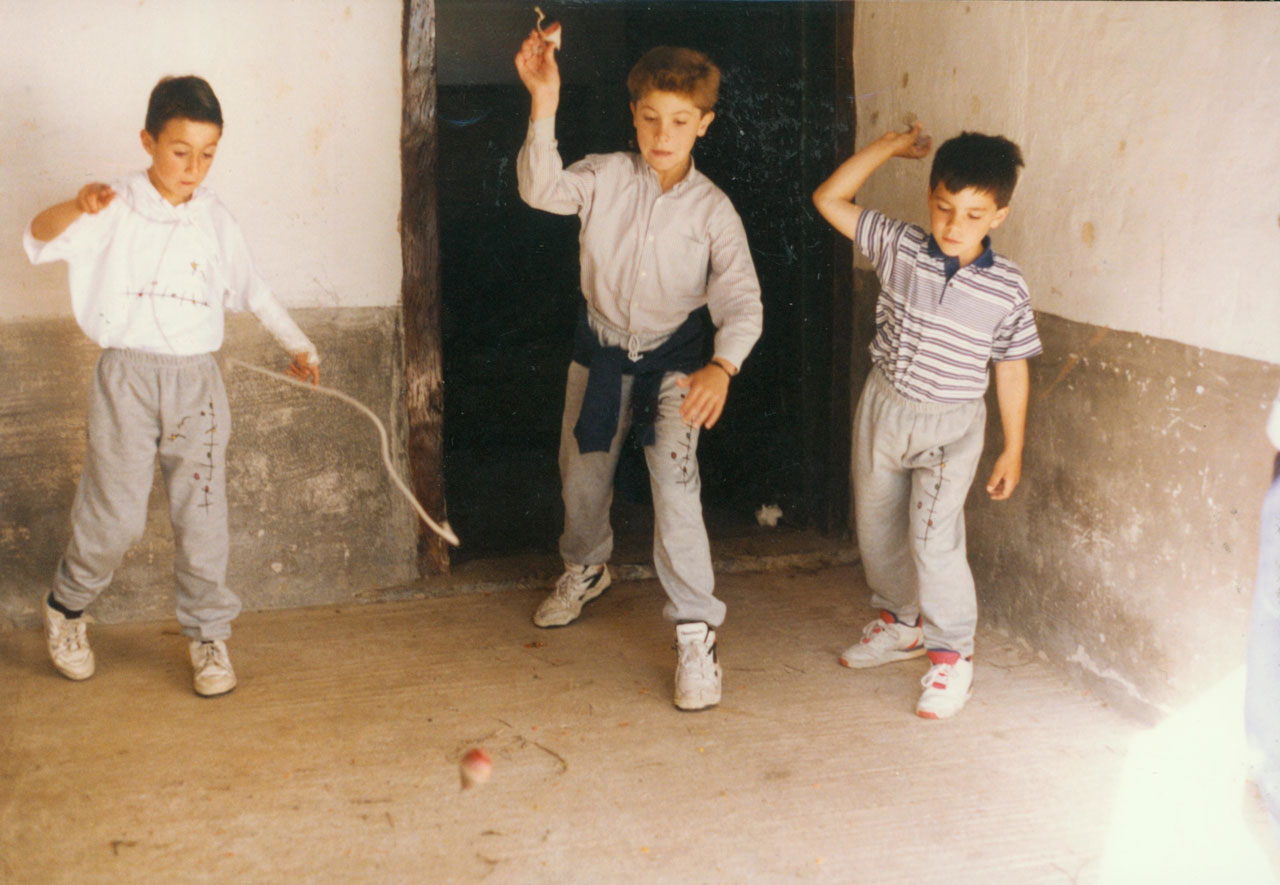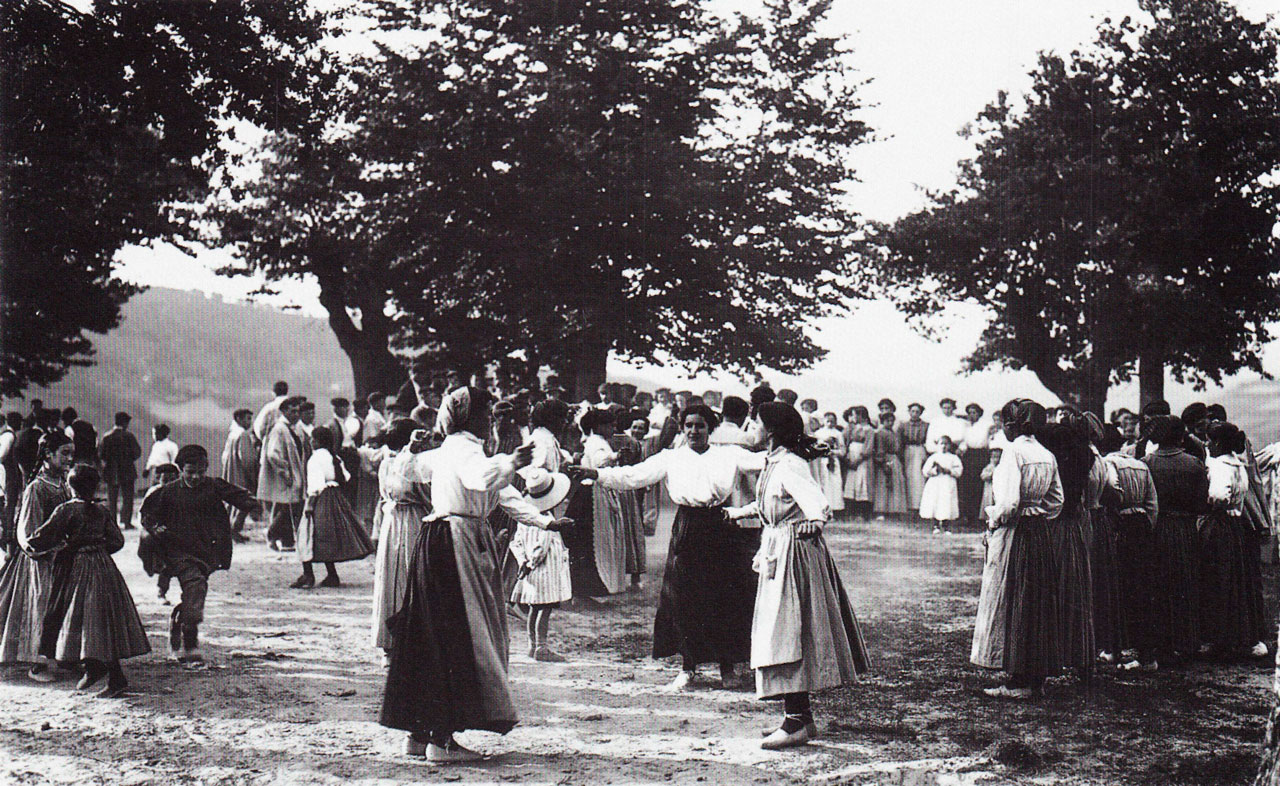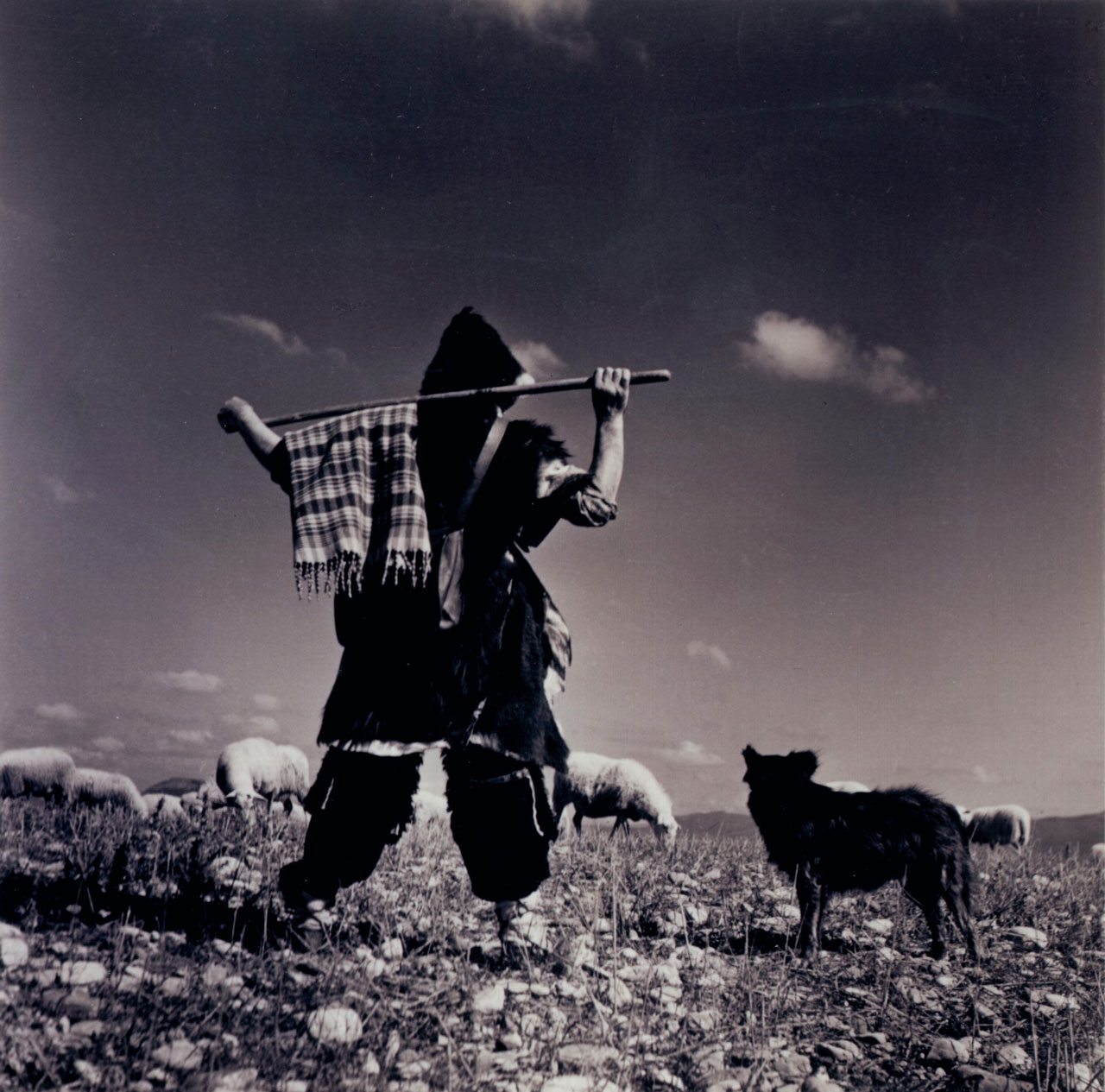House and Family in the Basque Country


House and Family in the Basque Country
Gure etxean sua batzen, gure etxean aingeruak sartzen. Angels dance happily in a clean house.
Family Diet in the Basque Country


Family Diet in the Basque Country
Ogi erre berri, etxe galgarri. Soft bread at home, an unruly household.
Children’s Games in the Basque Country


Children’s Games in the Basque Country
Changes in the adult world are also necessarily reflected in the children’s world. It should not be forgotten that those changes also affect the world of beliefs, convictions and rites underlying many traditional games; many of which would be stripped of meaning, some would fall into disuse, others would persist and would adapt to the new circumstances.
Traditional Medicine in the Basque Country


Traditional Medicine in the Basque Country
Osasuna galtzen duenak dena galtzen du. If you don’t have your health, you don’t have anything.
Dancing during patronal celebrations. Zeanuri (B), 1922. Source: Labayru Fundazioa Photograhic Archive: Felipe Manterola Collection.
Rites from Birth to Marriage in the Basque Country


Rites from Birth to Marriage in the Basque Country
Young men and women would meet during the Sunday stroll, dances and pilgrimages.
Funeral Rites in the Basque Country


Funeral Rites in the Basque Country
Each homestead used to have a burial site inside the church’s nave. When burials were transferred to cemeteries, the once real burial site in church became a symbolic family grave, were offerings of light and bread were made to their dead.
Shepherd wearing a cape. Eriete (N), 1959. Source: Archive of the Museum of Navarre: Nicolás Ardanaz Collection.
Ganaderia y pastoreo en Vasconia


Ganaderia y pastoreo en Vasconia
Nolako artzaina, halako artaldea. Every animal ends up looking like their master.
Agricultura en Vasconia


Agricultura en Vasconia
Hasta la década de los años 1950 el molino harinero era un elemento indispensable en la economía grícola-ganadera de nuestros pueblos.







